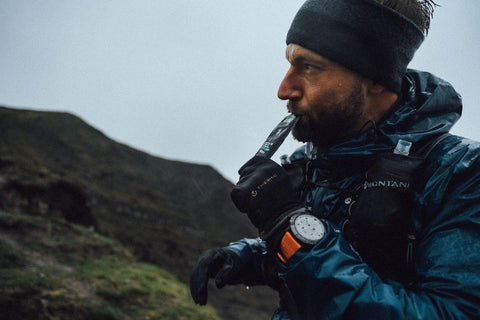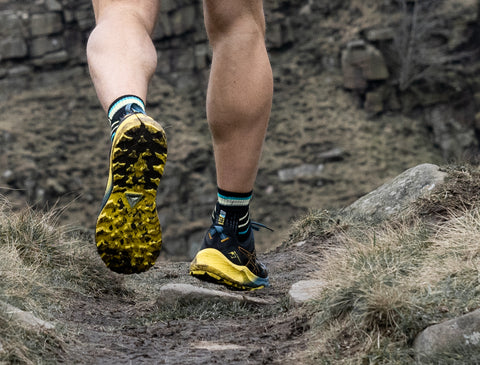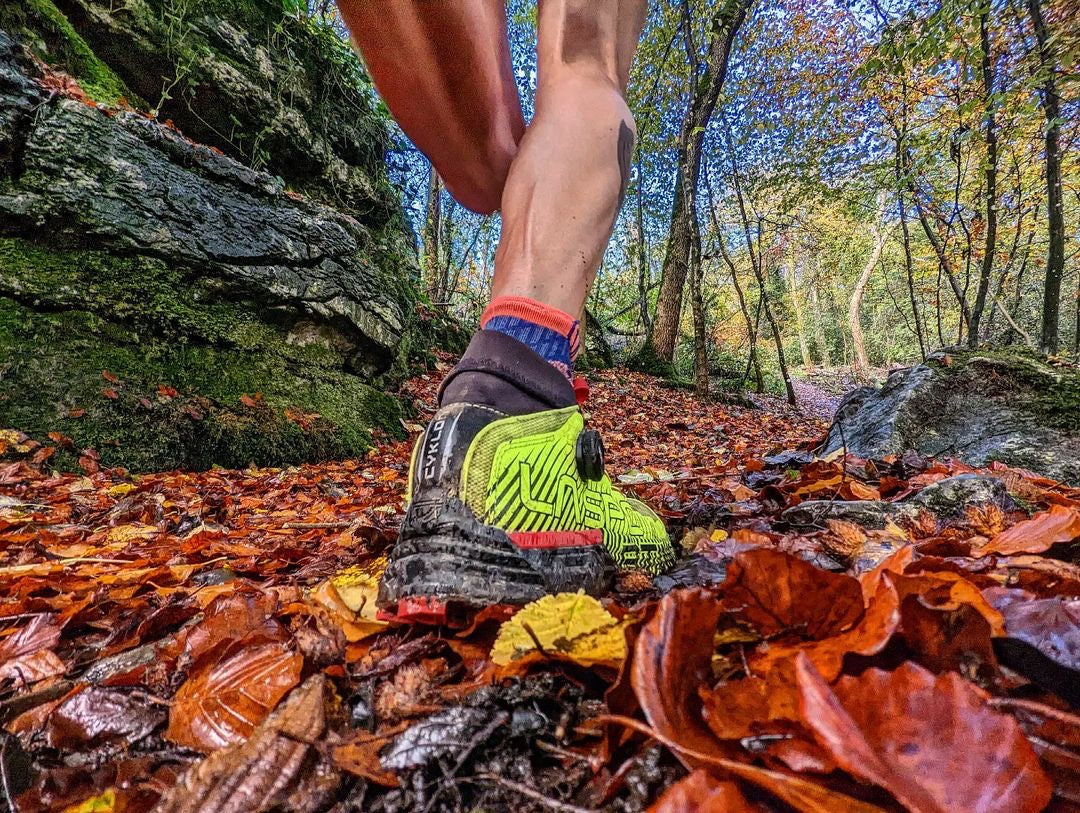Trail Running in Autumn & Winter…
How do you prepare for it?
For those of us who get out and hit the trails we know that trail running in autumn and winter can be a fantastic experience! However, it does require a little more preparation to ensure safety and maximise enjoyment.

Here are some tips our collective have come up with on how to prepare for trail running during these seasons:
Stay Visible & Safe
Plan your route and be aware that some trails may be closed or less accessible during the winter months due to weather conditions or maintenance. Check local trail conditions and closures before you go.
Days are shorter in the fall and winter, so it's essential to stay visible to other trail users. Wear bright, reflective clothing or accessories and use a headlamp or a chest light if you'll be running in the dark. Know your route and let someone know your planned route, estimated return time, and stay safe!
Check the Weather!
I mean this might sound simple… but before heading out, always check the weather forecast for the day. This will help you dress appropriately, plan your run, and pack accordingly. Be prepared for changes in weather! As we all know conditions in the mountains and on the trails can change rapidly, even more so in the Autumn and Winter months.

You might want to think about a winter packing list.
Pack necessary safety and navigation gear, such as a trail map, compass, or GPS device. Ensure you have a fully charged mobile phone for emergencies, depending on the distance being covered/ or time spent on the trail a powerbank may be needed. Depending on the conditions, you may also need traction devices e.g., microspikes or crampons, and trail running poles.
Layering up.
Layering is crucial for cold weather running. Start with a quality, moisture-wicking base layer to remove sweat away from your skin. Add insulating layers like fleece or down for warmth, and finish with a waterproof or windproof outer layer to protect against rain, snow, and wind.

Protect Your Extremities.
Don't forget about your hands, feet, and head. As with all activewear clothing which is worn next to the skin wear moisture-wicking materials. These will keep the skin dryer and less susceptible to cold. We would say ensure insulating gloves offer protection from the wind and rain. Keep your head/ or ears warm with either a beanie, head band, or Buff to retain heat and protect against the wind/chill, and quality socks to keep your feet warm, a synthetic and wool blend is best to get the best of both materials. Wool will provide insulation and warmth, while synthetics are quick drying and more efficient at wicking moisture.

Shoes! Your shoe choice can be crucial.
Trail running shoes with good traction are essential, especially as you are more likely to encounter slippery or muddy terrain. Some runners also opt for gaiters to keep snow, mud, and debris out of their shoes.
Then there’s the Goretex vs. Non Goretex shoes a whole other can of worms… there are benefits to both and choosing between them for trail running should be based on your preference, the specific conditions, terrain, and weather you will encounter.

Keep your body well fueled and hydrated.
Listen to your body even in cold weather, don’t ignore signals of hunger or thirst. It's essential to stay hydrated and fueled, especially on longer runs.
Stay hydrated:
- Drink around 500ml water about 20 – 30 minutes before you start your trail run to ensure you're adequately hydrated from the beginning.
- Carry a hydration pack or insulated water bottle to prevent your water from freezing. Insulated bottles or hydration packs with an insulated hose can help keep liquids from freezing for longer trail runs.
- Carry your personal preference of water, sports drink, electrolyte solution, or squash.
Keep on snacking! I read a comment on Facebook comparing a trail run to a moving picnic! Snack on portable easy to eat, and digest foods to keep your energy levels up during longer runs. We all know what is available and we have our preferences. Our collective likes the following options: a variety of gels, and bars, plus... boiled spuds, Haribo, Pepperami (minis), dried fruit or nuts.
Cold weather can make it easier to underestimate how much you're sweating, so pay attention to your hydration levels. If you start to feel extremely cold, numb, or fatigued, it's best to cut your run short and head back to warmth.
Adjust your running form.
Be prepared to adjust your stride and pace to accommodate slippery or uneven terrain. In colder weather, it may take longer for your muscles to warm up and for your body to get into a rhythm. Start your trail run at a slower pace and gradually increase your pace as your body adapts to the weather conditions.
Think about reducing your stride. Reducing your stride length will help to maintain better balance and reduce the risk of slipping and falling, particularly on icy or muddy terrain.

Get warm, and cosy!
After your run, change out of wet or sweaty clothes as soon as possible to prevent hypothermia. Warm up with a hot drink and a shower, if possible.
Remember that safety should always come first when trail running in adverse weather conditions. If the conditions become too extreme, it's better to postpone your run or opt for an indoor workout instead.

